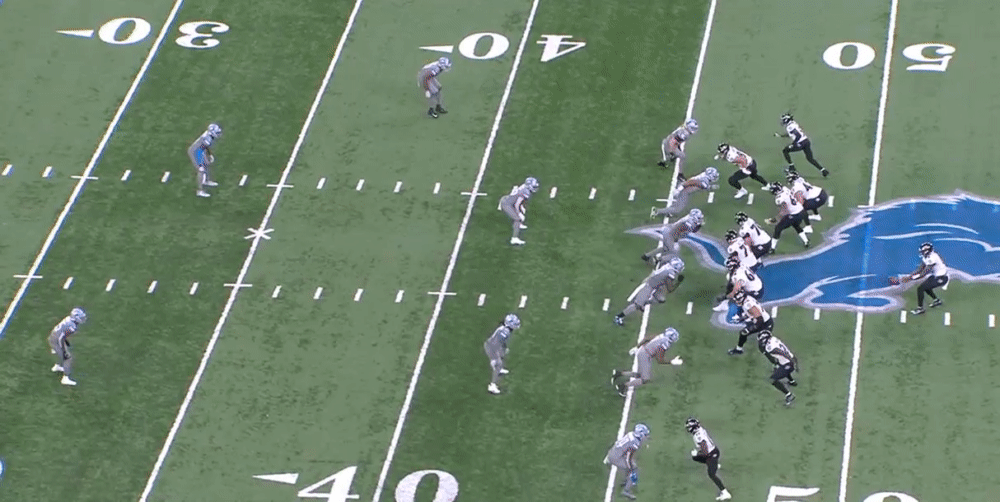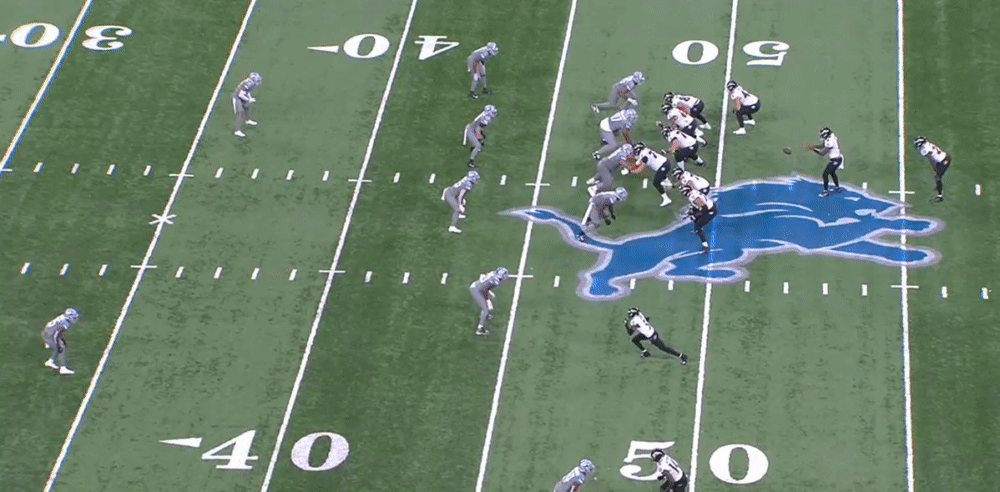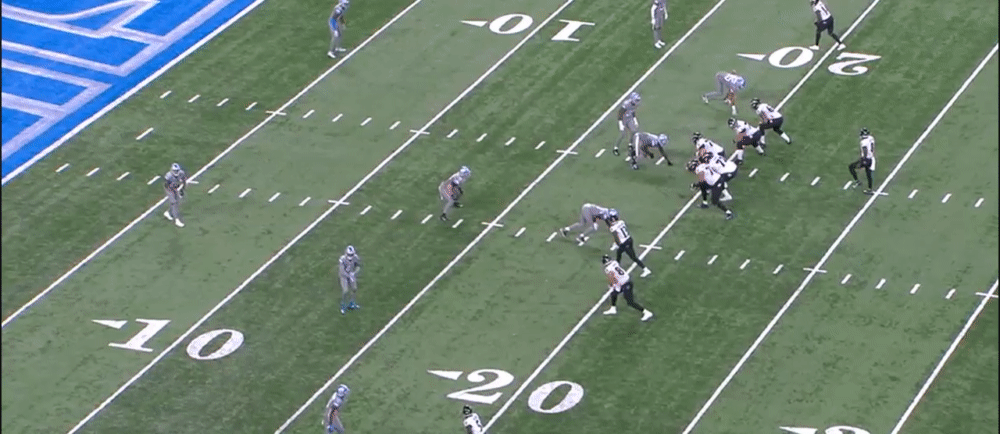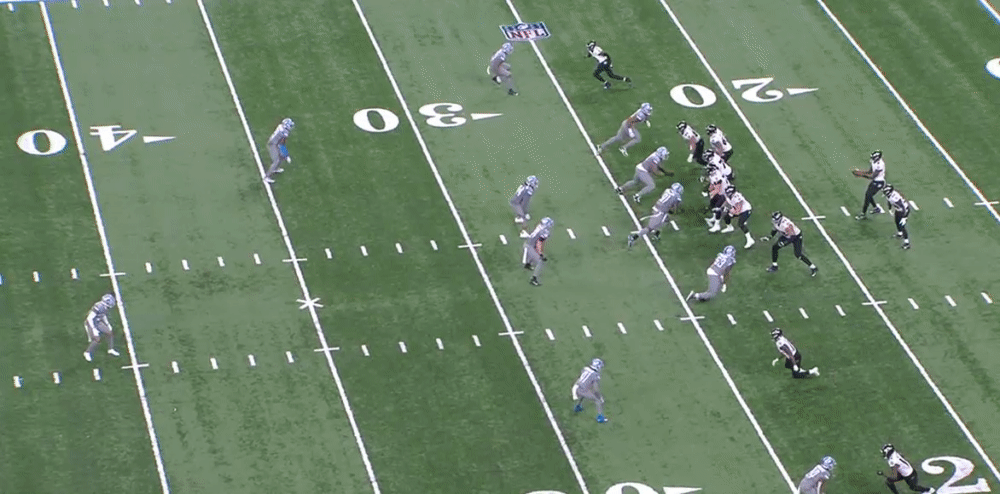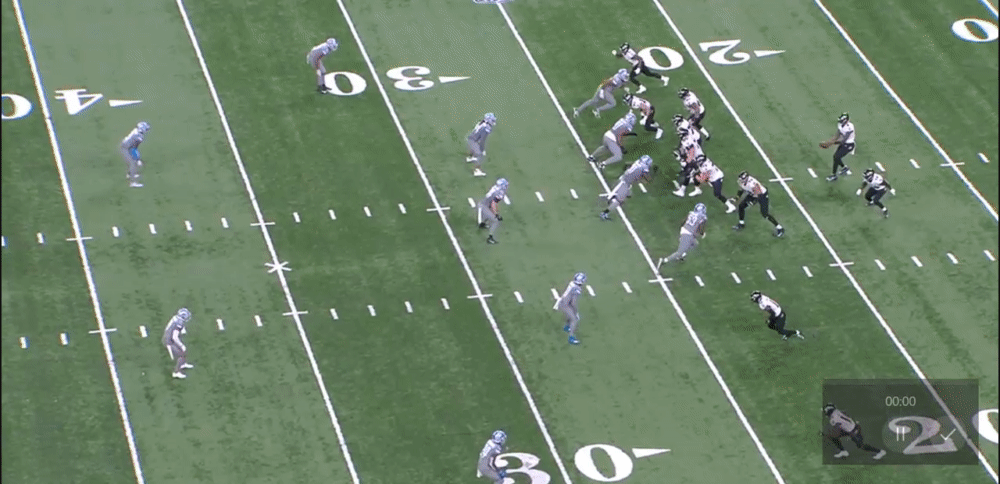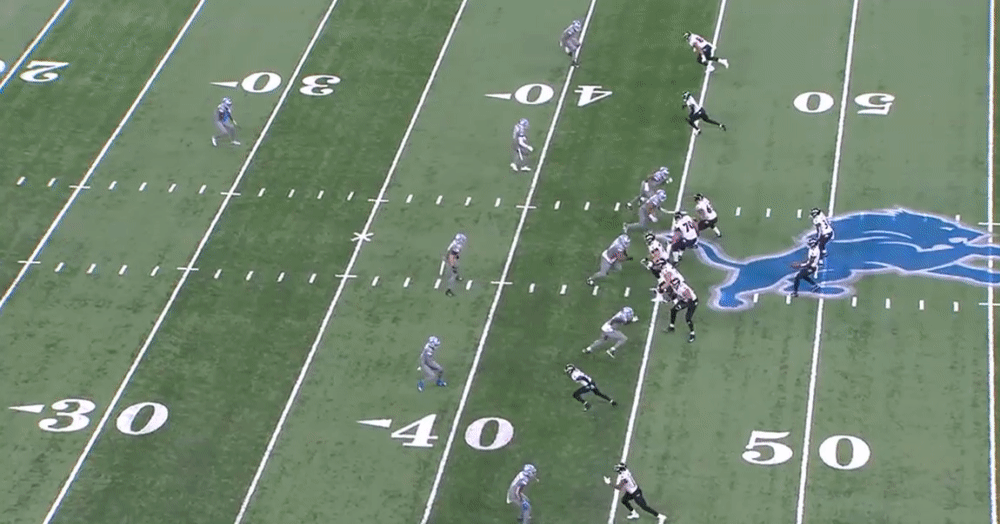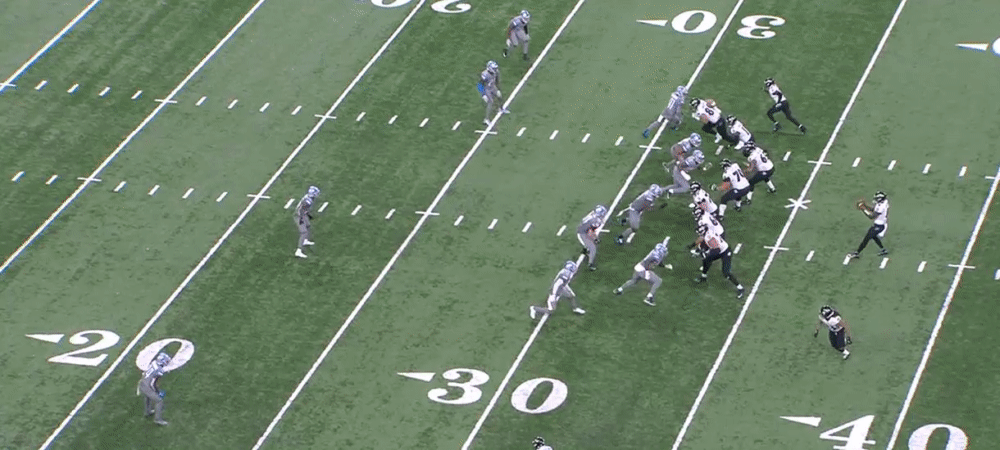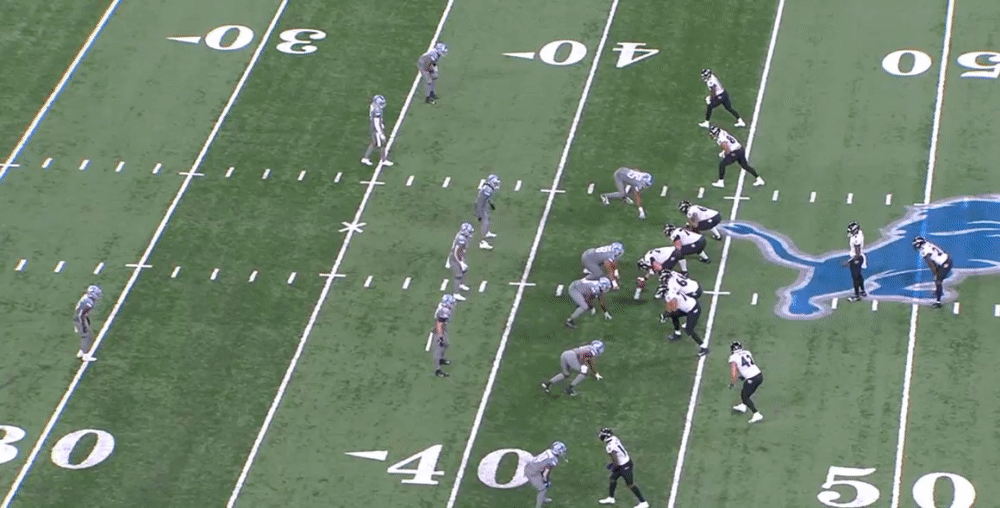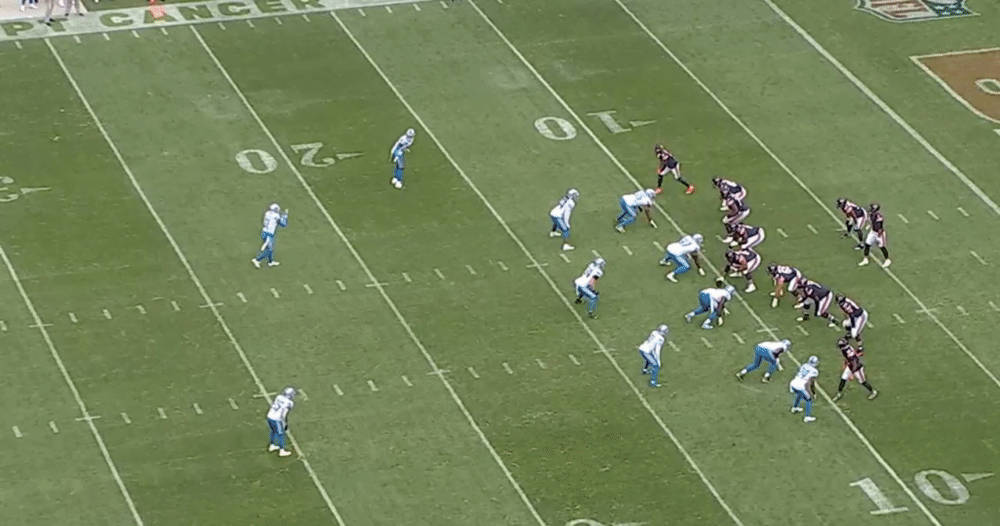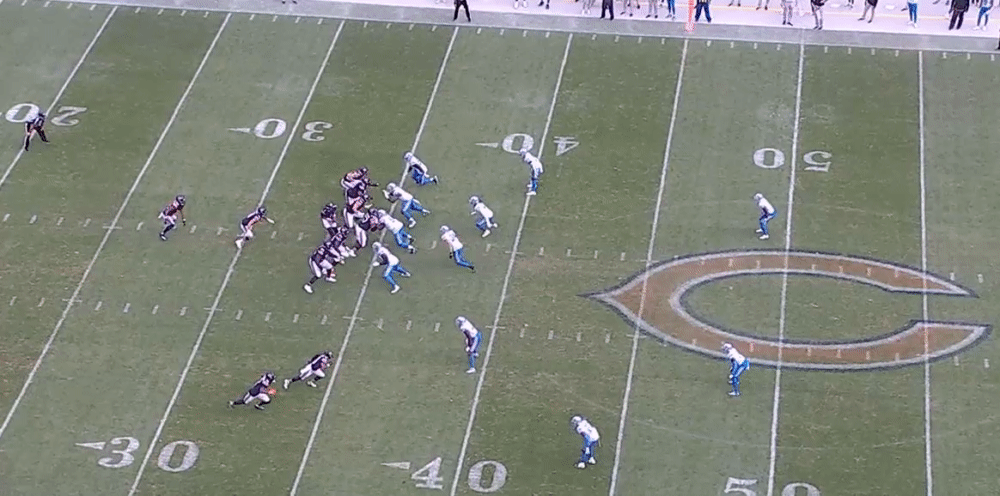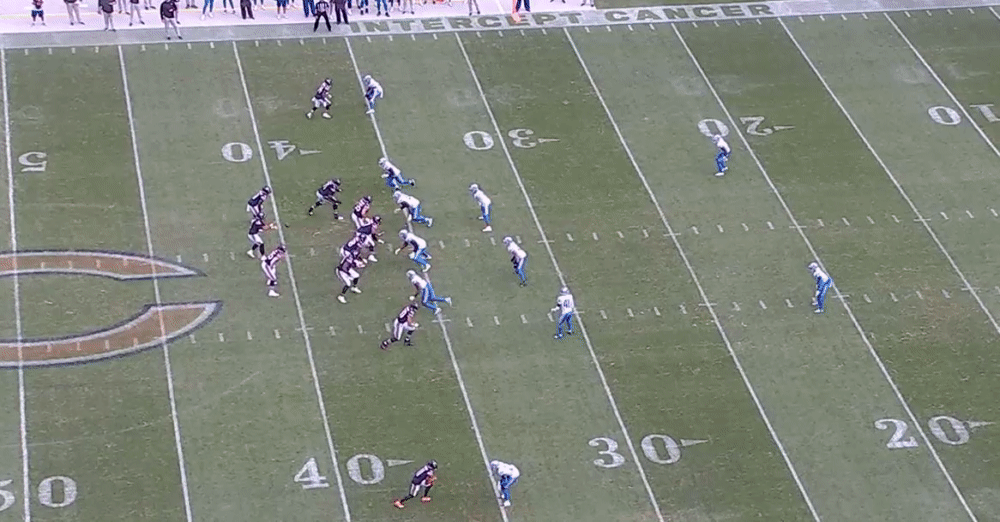Turning around the Detroit Lions defense, a unit that finished with the most yards and points allowed in franchise history a season ago, was never going to be an overnight process.
Among the issues that have persisted from last season has been the propensity for giving up big pass plays. In 2020, the Lions allowed 66 gains of 20 yards or more through the air, worst in the NFL. And they’ve actually been worse on a per game basis through four contests this season, surrendering 19 explosive pass plays.
In this film review — our first of the season due to some unforeseen issues getting our hands on tape in a timely manner — we’re going to explore the big-play breakdowns from the past two weeks to see if the Lions are making any headway with correcting the issues.
We’ll start with the game against Baltimore, where quarterback Lamar Jackson was the most aggressive downfield passer in the NFL that week, attempting 12 throws of 20 yards or more beyond the line of scrimmage.
The Ravens’ first chunk gain through the air didn’t come until the second quarter, when Jackson connected with tight end Mark Andrews for the first of several big plays for the tandem.
Prior the snap, veteran linebacker Jalen Reeves-Maybin appeared to be trying to communicate something to Derrick Barnes, but there was no clear acknowledgment from the rookie, who was making his first start.
As the play began, Reeves-Maybin followed the running back into the flat while Barnes initially defended Andrews on a crossing pattern, where he clearly expected to hand off responsibility on the route to another defender, even though one wasn’t in the area.
By the time Barnes recovered, it was too late and Andrews had a 21-yard pickup.
Later in the half, the Ravens again utilized a crossing pattern, this time leading to a 37-yard pickup for Marquise Brown.
Going right to left on his route, Brown was initially jammed by outside linebacker Charles Harris before Will Harris picked up the coverage in the back end. Jackson had to show patience after faking a handoff, waiting for the speedy Brown to clear the traffic across the middle, but without meaningful pressure from the pass rush, the receiver was easily able to outrun the safety to the sideline for the big gain.
Sure, the coverage could have been better, but it’s also not an ideal play call for a safety to be matched up one-on-one with a team’s No. 1 receiver, particularly one with Brown’s straight-line speed.
Communication issues cropped up again later in the possession when Jackson connected with Devin Duvernay for a 19-yard touchdown on a third-and-18 play. Here, Will Harris identifies something pre-snap and attempts to relay that information to rookie slot corner AJ Parker.
Unfortunately, the message wasn’t received as both Harris and Parker follow the same option to the middle of the field, allowing Duvernay to run free to the back corner of the end zone for an easy score, with Harris showing his frustration with the breakdown while the ball is still in the air.
The Ravens had one more possession before the end of the half and sloppy coverage early and late in the series should have proven more costly for the Lions.
On the first play of the drive, cornerback Bobby Price was sloppy in his backpedal, taking a false step toward the sideline and giving Brown a free release with wide separation on the inside lane. But even though Jackson’s throw was on target, the receiver couldn’t handle it.
One play later, running a Cover-4 match, safety Dean Marlowe picked up James Proche on a deep route from the left slot, but he failed to stick with the receiver as the Jackson’s pocket broke down and the quarterback rolled to his right.
Now in a scramble drill, Proche followed that movement toward the right sideline and Marlowe wasn’t in position to make a play on the 29-yard gain.
From there, Brown had another shot after another breakdown by Parker, who appeared confused by his coverage responsibilities, allowing the receiver to run free down the sideline.
Detroit’s coverage woes continued into the second half, when another zone coverage execution error allowed Andrews to come open on a crossing pattern for a 41-yard gain.
Reeves-Maybin, from an inside alignment, initially picked up the tight end but both Alex Anzalone and Parker were committed to the back in the flat at the exchange point, ignoring the deeper option.
Andrews’ big day was almost bigger thanks to another miscommunication in Detroit’s back end. Three plays after the 41-yard pickup, he ran a vertical route on third down that split between safeties Tracy Walker and Harris. The two were seen communicating before the snap, but they clearly weren’t on the same page as Harris turned to run with Andrews only after he passed.
Unlike Brown’s two drops, Jackson put the ball to the opposite shoulder than his intended target anticipated, resulting in an incompletion in the end zone.
Andrews did come back with a 24-yard pickup on Baltimore’s next possession, again taking advantage of Detroit’s defense not properly communicating.
Ahead of the snap, Marlowe animatedly tried to convey a change, but both Reeves-Maybin and Barnes, in particular, bit hard on a play fake, which allowed the tight end to get behind the second layer of the defense.
Finally, there’s the much-discussed and previously dissected fourth-and-19 conversion that set up the Ravens’ winning field goal. It’s clear, when rewatching the play, Price is the defender out of position.
The Lions are playing man coverage on the outside, but Price inexplicably releases receiver Sammy Watkins on a crossing pattern. Harris is in the vicinity of the throw, playing in a zone at the first-down marker, but the assigned alignment proves too shallow to make a play on a ball that sails just over his outstretched reach.
Admittedly, that was a frustrating series of plays to watch, and it was clear why coach Dan Campbell put an emphasis on communication heading into this past Sunday’s matchup with the Chicago Bears.
While there were some clear issues with technique and a couple of questionable play calls, the biggest problems were with Detroit’s young players — Barnes, Parker and Price — not fully understanding their responsibilities within the play designs.
Ideally, young players grow from those experiences, so let’s see what the Chicago tape tells us about their and the team’s week-to-week improvements.
Against the Bears, the Lions gave up five explosive pass plays of 20 yards or more with four coming on Chicago’s three touchdown drives.
The first, on the opening possession, saw the Lions get beat on another crossing pattern against their zone coverage. Darnell Mooney, who had the best game of his young career on Sunday, netted 21 yards with the reception.
Price was initially lined up across from Mooney on the play, but he gave no chase on the route as the receiver cut across the field. Elsewhere, Lions defenders matched up, leaving us to believe Price was at fault for the breakdown.
On the second possession, it was Mooney again, this time for 64 yards. Ahead of the snap, Marlowe, a deep split safety, came down into the box clapping, a clear hand signal. Price returned the clap in response, but whatever Marlowe thought he identified didn’t come to fruition. Mooney ran right past the two flat-footed defensive backs, with Price giving chase too late as quarterback Justin Fields unleased a deep throw.
Will Harris, opposite Marlowe, didn’t rotate to the middle of the field at the snap, suggesting he wasn’t responsible for deep support to that side of the field and explains why he wasn’t able to get there until after the ball arrived.
Price got beat twice more in the third quarter before he was yanked from the lineup.
The first throw was the result of sloppy technique as the young cornerback gave away positioning at the top of receiver Allen Robinson’s in-breaking route. Price stumbled a bit through contact with Robinson, allowing the veteran to gain easy separation out of his break for a 28-yard pickup.
Two plays later, Fields found Mooney for 32 yards down the right sideline. To Price’s credit, his deep coverage on this play was far superior to his blown assignment against Brown the previous week. This time, instead of giving up his inside position, Price forced the receiver to the outside and smoothly turned to give chase.
But the coverage fell apart late, in large part due to an outstanding throw by Fields. Price fell out of phase late in the route, as Mooney drifted toward the sideline, putting the defender out of position to make a play on the ball or the receiver’s hands.
Fields added one more 27-yard gain to Robinson late in the third quarter, again putting a sideline throw on the money in between the zone coverage of Amani Oruwariye and Harris. Oruwariye could have done a better job of getting proper depth on the play before the throw, but it wasn’t as glaring of an error as many of Detroit’s other coverage breakdowns the past two weeks.
In all, communication between the safeties, corners and linebackers did seem to be improved from a week earlier. The game was a tough one for Price, who continues to have the backing of his teammates and coaches but might need his workload dialed back a bit as he continues to navigate the position switch from safety.
jdrogers@detroitnews.com
Twitter: @Justin_Rogers
